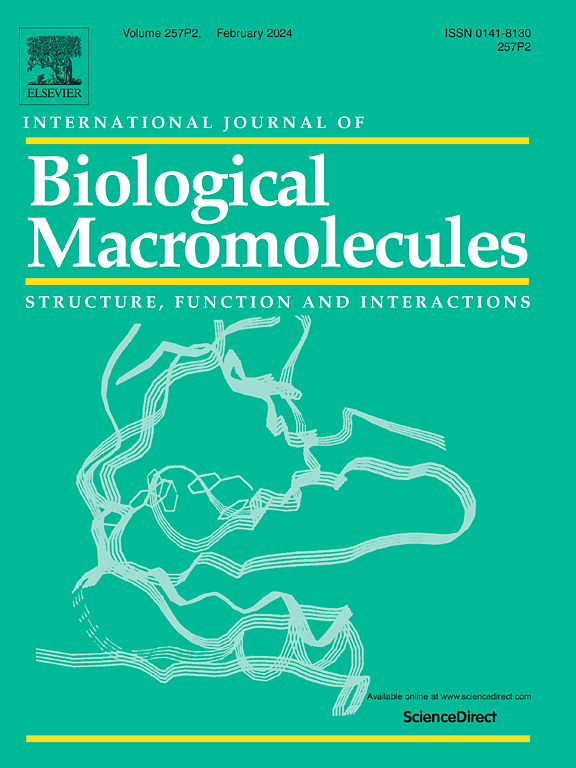人类巨细胞病毒通过 hcmv-miR-US33-5p 抑制 HCMV UL16 表达建立潜伏期的机制。
IF 7.7
1区 化学
Q1 BIOCHEMISTRY & MOLECULAR BIOLOGY
International Journal of Biological Macromolecules
Pub Date : 2024-12-01
DOI:10.1016/j.ijbiomac.2024.137798
引用次数: 0
摘要
人类巨细胞病毒(HCMV)是唯一能编码微RNA(miRNA)的β疱疹病毒。作为 26 个 HCMV miRNA 之一,hcmv-miR-US33-5p 已被报道通过下调宿主基因 syntaxin 3 抑制病毒 DNA 合成和 DNA 复制。在此,我们检测了 hcmv-miR-US33-5p 的其他 8 个假定靶 mRNA 的荧光素酶活性。病毒基因 HCMV UL16 被证实是 hcmv-miR-US33-5p 的直接靶标,因为过表达 hcmv-miR-US33-5p 会降低荧光素酶活性和蛋白水平。此外,通过使用缺失 UL16 的重组病毒,我们发现 UL16 并不是 hcmv-miR-US33-5p 下调 DNA 复制能力的必要基因。UL16 通过将 NKG2D 配体封存在内质网(ER)中并减少其在细胞表面的表达,从而在 NK 细胞逃避过程中发挥关键作用。我们证实,hcmv-miR-US33-5p 的过度表达会诱导一些 NKG2D 配体,而不依赖于其他 HCMV 基因,并降低 MICB 与 UL16 之间的相互作用。这些刺激性 NKG2D 配体可被 NKG2D 识别,进而激活 NK 细胞。我们的研究结果让我们深入了解了 HCMV 通过抑制 UL16 和 hcmv-miR-US33-5p 刺激 NKG2D 配体表达来促进潜伏的机制。本文章由计算机程序翻译,如有差异,请以英文原文为准。
A mechanism of human cytomegalovirus for establishing latency through inhibition of HCMV UL16 expression by hcmv-miR-US33-5p
Human cytomegalovirus (HCMV) is the only beta herpesvirus that can encode microRNA (miRNA). As one of the 26 HCMV miRNAs, hcmv-miR-US33-5p has been reported to inhibit viral DNA synthesis and DNA replication via downregulation of the host gene syntaxin 3. Here, we tested the luciferase activity of 8 other putative target mRNAs of hcmv-miR-US33-5p, which were identified via hybrid PCR, 7 of which decreased following the over expression of hcmv-miRNA-US33-5p. A viral gene, HCMV UL16, was confirmed to be a direct target of hcmv-miR-US33-5p since both luciferase activity and protein levels were decreased by hcmv-miR-US33-5p overexpression. Moreover, by using a reconstituted virus with UL16 deletion, we found that UL16 is not an essential gene for the ability of hcmv-miR-US33-5p to downregulate DNA replication. UL16 plays a critical role in NK cell evasion by sequestering NKG2D ligands in the endoplasmic reticulum (ER) and reducing their cell surface expression. We demonstrated that over expression of hcmv-miR-US33-5p induced some NKG2D ligands independent of other HCMV genes and decreased the interaction between MICB and UL16. These stimulating NKG2D ligands can be recognized by NKG2D and subsequently activate NK cells. Our results provide insight into the mechanisms by which HCMV promotes latency through the inhibition of UL16 and the stimulation of NKG2D ligand expression by hcmv-miR-US33-5p.
求助全文
通过发布文献求助,成功后即可免费获取论文全文。
去求助
来源期刊
CiteScore
13.70
自引率
9.80%
发文量
2728
审稿时长
64 days
期刊介绍:
The International Journal of Biological Macromolecules is a well-established international journal dedicated to research on the chemical and biological aspects of natural macromolecules. Focusing on proteins, macromolecular carbohydrates, glycoproteins, proteoglycans, lignins, biological poly-acids, and nucleic acids, the journal presents the latest findings in molecular structure, properties, biological activities, interactions, modifications, and functional properties. Papers must offer new and novel insights, encompassing related model systems, structural conformational studies, theoretical developments, and analytical techniques. Each paper is required to primarily focus on at least one named biological macromolecule, reflected in the title, abstract, and text.

 求助内容:
求助内容: 应助结果提醒方式:
应助结果提醒方式:


